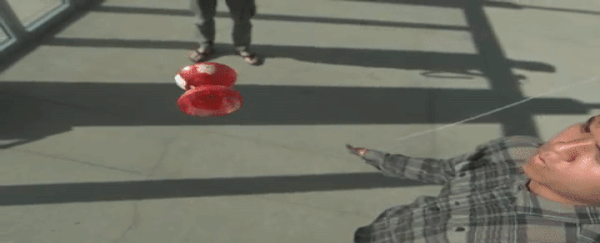
Yo-yos can do some incredible tricks, and, generally, the science is pretty straightforward - the two hemispheres of a yo-yo are attached to an axle that moves up and down a piece of string. But… what happens when you take the string away?
As yo-yo champion Ben Conde shows in the latest episode of Veritasium, a stringless yo-yo is possible, and it can actually perform even more awesome stunts than the traditional kind. But what kind of crazy physics is going on here to make this work?
As Derek explains in the video above, it all comes down to friction. Let's start with a simple yo-yo motion - here, the stringless yo-yo works pretty much the same as a traditional one, you just need to tug on the string to create friction and send the toy travelling upwards again before you run out of fabric.
But the fact that this yo-yo is unattached means Conde can also send it flying out on its own, catch it, and bring it right back in, without breaking a sweat.
While it looks like it defies the laws of physics, it actually makes sense. First of all, Conde starts his yo-yo off moving out along a string, just like you would with a traditional yo-yo.
That allows it to build up angular momentum as it descends, so when it reaches the end of the string its sent flying through the air without losing any of its rotation.
So far so good, but how does a tiny, light piece of string catch and stop a solid plastic yo-yo mid-air? That's all thanks to friction. Derek shows that when the string meets the yo-yo mid-flight and begins to wrap around the axle once more, it quickly begins applying some surprisingly powerful force on the device.
That's explained by something called the belt friction equation, which states that the force a string can exert on something increases exponentially with the angle the string makes around the axle - so the more times it wraps around the yo-yo, the more force it has on the toy.
This is similar to the way just a few loops of rope can hold a huge ship at a dock, and it's incredibly impressive to watch in action.
Check out the video above, and rest assured this is one science trick you can try at home. We just can't guarantee you'll be able to pull it off like Conde can.
